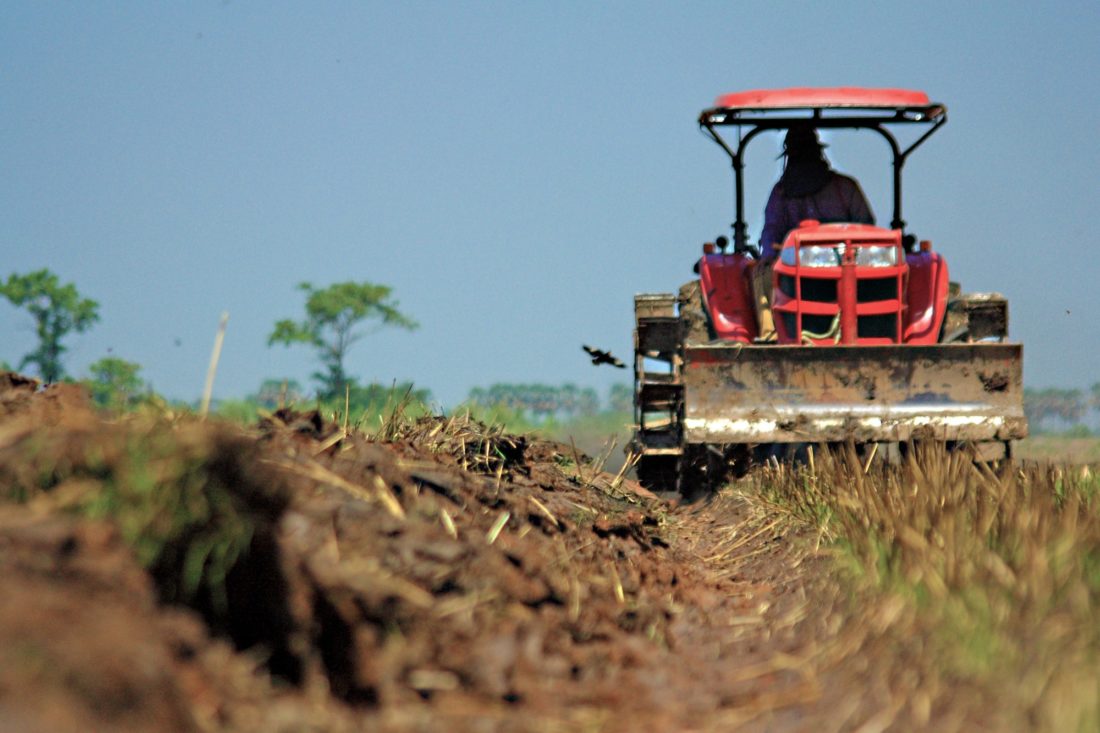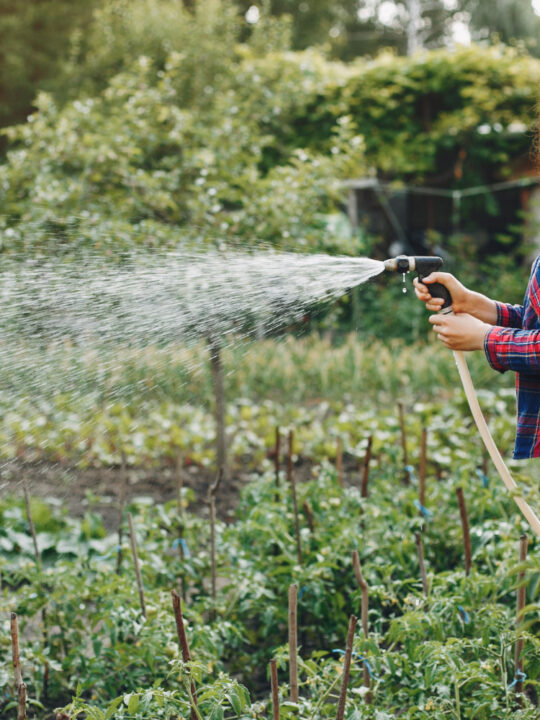 Guess what? Thanks to heavy demands on the farming sector, the earth is losing 24 billion tons of fertile soil every year. That means that about one-third of the world is dealing with extremely degraded soil.
Guess what? Thanks to heavy demands on the farming sector, the earth is losing 24 billion tons of fertile soil every year. That means that about one-third of the world is dealing with extremely degraded soil.
Want to know a secret? Using a garden tiller on your farm can do wonders for the soil’s fertility. Read our guide and learn everything you need to know about this piece of equipment!
Table of Contents
Why You Should Use a Tiller
You might be wondering: what is a tiller used for? For those who are new to the gardening game, you might want to pick up a cultivator or rototiller to help you get the job done. Yes, you read that right.
Incredibly, cultivating or tilling your farm is the best way to prepare your soil for planting crops. And if you really want to take it up a notch, there’s nothing wrong with mixing the following into your soil:
- Sand
- Compost
- Lime
- Fertilizer
Here’s the thing – despite what you may think, it’s an excellent idea to cultivate or till your farmland during the fall. That’s because cultivation or tilling toward the close of the harvest season can turn under your remaining plants. Of course, this can give you a jump start on next year’s crops too.
As if that’s not enough, tilling your farmland in the fall is the perfect time to add in your favorite summer compost material as well. But here’s the catch.
It can be pretty hard to find the right tool for you, especially since there are gas, batter, and electric cultivators and tiller on the market. In spite of this fact, each tool will get the job done in terms of preparing your farmland for fresh crops.
Need help in the cultivating and tiller department? We got your back. Read on to learn about everything from using a tiller correctly to picking out the highest quality one!
How to Use a Tiller
Not sure how to use garden tiller? You’ve come to the right place. First things first, cultivating or tilling your farmland is a method practiced by gardeners to improve their soil fertility.
Here’s how it works. The more that you till the soil, the more fertile it becomes. It’s easy: tilling your farmland stirs up your soil, aerating it in the process. In case you didn’t know, aerating your soil can actually help nutrients such as oxygen and water reach the roots of your plant.
On top of that, tilling your soil can prevent weeds and insects from eating up your crops as well. Check this out. Crazily enough, the best time to cultivate or till your garden would probably be in the springtime.
Naturally, that’s when a farmer’s soil is typically the most parched. Of course, the climate and location that you live in have an impact too. However, most farmers shouldn’t have a problem with cultivating or tilling their soil anytime between March and June.
Pro tip – try to avoid tilling your soil while it’s soaked. Unfortunately, this can make you compact your soil, which could eventually speed up the whole drying process. To be sure that your water levels are right, feel free to grab a palmful of earth and squeeze it in a ball.
Next, be sure to press your finger into soil, testing to see if it will fall apart. What happens if your ball of soil collapses? Clearly, that means that your soil is totally ready to be tilled.
However, here’s the kicker. Before you go out there and till away, it’s important to know which kind of tiller you need, including:
- Front-tine tillers
- Back-tine tillers
But how do you pick out a soil tiller in the first place?
Picking Out a Soil Tiller
Okay, so here comes the fun part: picking out a soil tiller. For starters, you’ve got to think about what you’re looking for in a garden tiller to purchase the best one. Consider this.
Are you planning to fill up your gas tank every single time that you use it? If not, you might want to think about getting a plug-in garden tiller with a power cord. Another thing to keep in mind is that gas-powered tillers are often way louder and less sustainable than their electrical counterparts.
On the other hand, using an electrical-powered garden tiller could potentially limit your range of use. Plus, you may have to spend extra time focusing on where your cord is as well. Now that we’ve got that part down, it’s time to talk about gas and oil tillers.
Do you prefer using gasoline in your garden tiller? If so, you might want to check out one with a four-cycle engine that’s a little heavier than usual. That’s because it will have two different tanks for your oil and gas.
Meanwhile, purchasing a garden tiller with a two-cycle engine will require you to mix your oil and gas into one combined fuel. In addition, have you thought about the width and depth of cut that you’re looking for?
Just so you know, there are certain cultivator-tillers out there that have fixed limits on them. On the bright side, others have adjustable limits, which can help you reduce your cultivation width between tightly planted crop rows.
Here’s the deal. Before you buy the most ideal garden tiller, you should consider if you want to purchase any accessories as well. That could include anything from furrow-forming plow blades to edge trimmers!
What Makes a Rototiller High Quality
What makes a rototiller high quality? We’re glad that you asked. As the ultimate mixing and digging machines, garden cultivators and tillers are designed to stir hard dirt into your garden bed.
Plus, tilling or cultivating your land can keep it conditioned all year long, particularly throughout the growing period. Luckily for you, today’s tillers are way lighter than their older, heavier, and larger predecessors. Besides this, modern garden tillers are easier to reverse and turn too, especially the mini ones.
Another incredible breakthrough with rear-wheeled garden tillers is that they can rotate their front tines forward now. The result: softer soil, more weeding, and enhanced aeration.
News flash – you know that you have a top-notch garden tiller or cultivator on your hand if it has awesome features like fast adjustments for width and height of cut. Also, rear tine tillers with adjustable limits allow you to till super narrow rows or spaces too. Obviously, adjusting the height of your tine is key to choosing a special depth of cut during the cultivating period.
Complete with folding wheels and handlebars, a state-of-the-art garden tiller will be compact enough to fit into tight storage or garage spaces. Despite this fact, those with lower quality tillers might have handles that fold down but may not have the same stability and strength as pricier versions.
Another word of advice is to make sure that your gas-powered garden tiller has a strong starter cord on it. That’s because it has to survive being pulled on over and over again without breaking or fraying. Besides this, the engine of your gas or electric-powered tiller should be super durable as well.
How can you tell the difference? To be honest with you, one surefire sign that you’ve got a quality garden tiller on your hands is if it’s engine can stop and start safely and easily. It should also be simple to maintain and run without fear of stalling it!
Planning to pick up a portable diesel generator anytime soon? We highly recommend that you visit website product pages to compare prices before you buy!
Start Using a Garden Tiller Today
Looking to increase the fertility of the soil on your farm? We can’t emphasize this enough: start using a garden tiller today. Not only will this aerate your garden beds, but it will also help water trickle down to your plant’s roots too.
If you’re ready to take it to the next level, there’s no harm in adding in extra nutrients like sand, compost, and lime while you’re tilling the soil. Not to mention that fertilizer is a nice addition to your cultivating process as well.
What’s the bottom line? No matter if you choose a front-tine tiller or a back-tine tiller, you’re guaranteed to see a major improvement in the quality of your soil. We guarantee it!
Want to learn more landscaping hacks? Don’t hesitate to check out our blog now!







